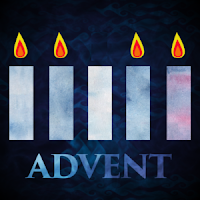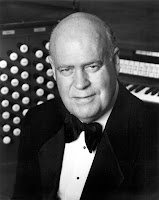Vocal Music
- New Year Carol - Benjamin Britten (1913-1976)
Instrumental Music
- The Old Year Now Hath Passed Away - J.S.Bach (1685-1750)
- In Thee Is Gladness - Marcel Dupré (1886-1971)
Congregational Music (all hymns from The Hymnal 1982 with the exception of those marked “R” which are from Renew.)
- Hymn 450 - All hail the power of Jesus’ name (CORONATION)
- Hymn R37 - Father, we love you (GLORIFY YOUR NAME)
- Hymn 250 - Now greet the swiftly changing year (SIXTH NIGHT)
- Hymn R26 - Jesus, name above all names (HEARN)
- Hymn 644 - How sweet the name of Jesus sounds (ST. PETER)
The Sundays between Christmas (December 25) and Epiphany (January 6) are usually called The First and Second Sundays after Christmas. Eight days after Christmas, on January 1st, is the Feast of the Holy Name of Our Lord Jesus Christ, which commemorates the naming of the child Jesus; as recounted in the Gospel read on that day,
at the end of eight days, when he was circumcised, he was called Jesus, the name given by the angel before he was conceived in the womb. - Luke 2:21
When the Feast of the Holy Name falls ON a Sunday, as it does this year, it supersedes all other lectionary readings. So we will focus on the Holy Name of Jesus with a nod to the passing year.
The hymns all focus on the Holy Name, even hymn 250 -
When Jesus came to wage sin's war,
The Name of names for us he bore.
Slovak, 17th cent.; Cithara Sanctorum, Levoca, 1636, Translator: Jaroslav J. Vajda
but our choral and instrumental music looks more toward the new year.
New Year Carol
Benjamin Britten was one of Britain's leading composers of the 20th Century. He composed in all the major genre - opera, orchestral, choral and vocal, and chamber music. "A New Year Carol" is from
Friday Afternoons, a collection of twelve song settings by Benjamin Britten, composed 1933–35 for the pupils of Clive House School, Prestatyn, Wales where his brother, Robert, was headmaster. (Two of the songs, "Cuckoo" and "Old Abram Brown", were featured in the film
Moonrise Kingdom.) "A New Year Carol", also known as "Levy-Dew", is a British folk song of Welsh origin traditionally sung in New Year celebrations. It is associated with a New Year's Day custom involving sprinkling people with water newly drawn from a well.
Here we bring new water from the well so clear,
For to worship God with, this happy New Year.
Chorus (after each verse):
Sing levy-dew, sing levy-dew, the water and the wine,
The seven bright gold wires and the bugles that do shine.
Sing reign of Fair Maid, with gold upon her toe;
Open you the West Door and turn the Old Year go.
Sing reign of Fair Maid, with gold upon her chin;
Open you the East Door and let the New Year in.
The meaning of the words "levy-dew" in the original lyrics of the song is not certainly known. One line of speculation holds that the words represent the Welsh phrase llef ar Dduw or llef y Dduw, "a cry to God". Others connect it to Middle English levedy ("lady"). I like to think it refers to the French phrase levez à Dieu, "raise to God", which may in turn refer to the elevation of the Host in Christian liturgy, since it mentions the water and the wine. “The seven bright gold wires and the bugles that do shine” refer to the golden strings of the harp and the trumpets of heaven, seven being
Verses 2 and 3 describe letting go of the old year and bringing in the new. “Sing reign of Fair
Maid” refers to folk mythology and golden maidens who represent the rising and setting of the
sun, and therefore the turning of seasons and years. As for the West and East doors, it's a custom in the British Isles, particularly Ireland, to enter the house through the front door and leave through the back at the stroke of midnight. The old year goes out the back as the new year comes in the front.
The Old Year Now Hath Passed Away
In Thee is Gladness
Bach wrote an organ collection called Orgelbüchlein (Little Organ Book), a set of 46 chorale preludes for organ based on hymns for each part of the church year. There were three written for New Years Day, Helft mir Gotts Güte preisen [Help me to praise God's goodness], Das alte Jahr vergangen ist [The old year now hath passed], and In dir ist Freude [In Thee Is Gladness]. I'm playing the second one as the prelude. The passing of the old year is mourned in twisting chromaticism throughout ‘Das alte Jahr vergangen ist’, despite that not being in keeping with the hymn text, a hymn of thanks for the past year and prayers for the coming year to Christ. Although primarily a supplication looking forwards to the future, the hymn also looks back at the past, reflecting on the perils facing man, his sins and his transitory existence.
Centuries later, in 1931, French organist Marcel Dupré wrote his own collection, 79 Chorals faciles pour orgue sur les mélodies des 79 vieux chorals dont Bach s’est servi dans ses Chorals-Préludes, based on the chorales used by Bach. Dupre prepared these short works, not as "another version" of the famous chorales and chorale preludes of Bach, but rather as a means of making the beginning organist aware of the beautiful chorale melodies and to prepare him or her for the study of Bach's works. This was an important pedagogical book while being at the same time a presentation of beautiful organ chorales.
I am playing Dupré's setting of the third New Year chorale in Bach's Orgelbuchlein, In dir ist Freude. It is written in the style of a trio, with the melody heard in the right hand (treble) while the left hand inserts a quasi-ostinato based on the first four notes of the melody, played over another ostinato of the same four notes, this time in quarter notes.

























